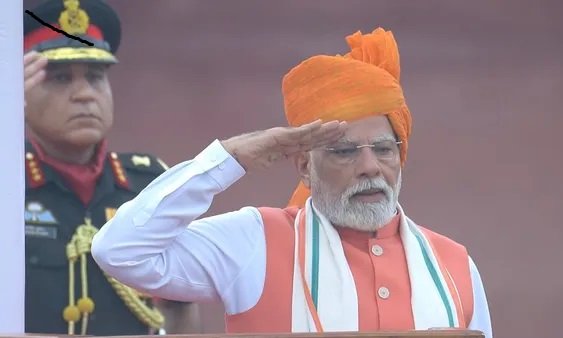Revamped tax regime to cut costs on most everyday goods, simplify compliance, and curb tax disputes ahead of the festive season.
NEW DELHI | Economy India: Prime Minister Narendra Modi on Friday announced a landmark overhaul of India’s Goods and Services Tax (GST), promising sweeping reforms by Diwali that will simplify the tax system, bring down prices on essential and daily-use products, and reduce the compliance burden for businesses.
The announcement comes eight years after the GST replaced a complex web of central and state taxes with a unified indirect tax system in July 2017. While hailed as a historic reform at the time, the GST regime has faced criticism for its multiple rate slabs, compliance complexities, and frequent litigation.
From Multi-Slab Complexity to Streamlined Structure
Currently, GST is structured into five principal slabs:
- 0% (Nil): Essential food items like fresh vegetables, grains, and milk.
- 5%: Most daily-use products, public transport, and certain packaged food items.
- 12%: Standard goods such as packaged snacks, footwear, and processed foods.
- 18%: Electronics, branded garments, and most services.
- 28% + cess: Luxury goods, automobiles, and “sin” products like tobacco and aerated drinks.
Under the new reform plan, this structure will be simplified to:
- Zero rate: Essential food items, medicines, and education.
- 5% slab: Almost all items currently in the 5% and 12% categories, covering 99% of goods from the middle slab.
- 18% slab: Standard goods, electronics, and most services.
- 40% special slab: Reserved for 5–7 “demerit” and luxury products, including premium vehicles, certain alcoholic beverages, and tobacco products.
This marks a reduction from five main slabs to two, plus a special category for high-tax items — a shift the government says will make GST easier to administer and understand.
Consumer Price Relief in Sight
The restructured GST is expected to bring immediate price relief for middle-class households, especially in daily-use goods such as packaged food, personal care items, and footwear.
“By moving nearly all goods from the 12% category to the 5% slab, we will lower the tax burden on consumers and stimulate demand,” Modi said in his Independence Day address. He added that the move would “put more money in the hands of families” just ahead of the peak festive shopping season.
For example:
- Packaged snacks currently taxed at 12% will now be at 5%.
- Household appliances will continue at 18%, but with fewer classification disputes.
- Basic medicines remain at zero rate, ensuring affordability.

Boost for Businesses and Compliance
The government expects the reform to not only help consumers but also reduce compliance headaches for small and medium enterprises (SMEs), which have long complained about the complexities of filing under multiple slabs.
“Having just two core tax rates will reduce disputes, ease classification issues, and improve GST collections by discouraging evasion,” said a senior official from the Ministry of Finance.
The reform could also cut down on the over 1.6 lakh GST-related cases pending in tribunals and courts across the country.
Industry and Expert Reactions
- Retail Sector: The Confederation of All India Traders (CAIT) welcomed the announcement, calling it a “bold and long-awaited reform” that would benefit both retailers and consumers.
- Manufacturers: Industry bodies such as CII and FICCI expressed optimism, saying the simplified structure could attract more investment into manufacturing.
- Economists: Experts praised the move but cautioned that the transition process must be smooth to avoid short-term supply chain disruptions.
“While the long-term benefits are clear, the government will need to issue clear transition guidelines to avoid confusion over pricing and invoicing during the changeover period,” said Dr. Raghav Mehta, a tax policy analyst.
Strategic Timing Before Festive Season
The announcement, made less than three months before Diwali, is being seen as strategically timed. Lower prices and simpler taxation could boost consumer sentiment, potentially driving up sales during India’s busiest shopping period.
In the last two years, the government has been under pressure to tackle inflation, particularly in food prices. This GST reform aligns with broader efforts to ease the cost of living while maintaining fiscal stability.

Political and Economic Implications
Economically, the reform could improve India’s ranking in ease of doing business, attract more investment, and help formalise the economy. Politically, it reinforces the government’s narrative of delivering “pro-people, pro-growth” policies.
If implemented as planned, this GST revamp will be the biggest tax reform since GST’s original rollout in 2017, reshaping how India’s indirect taxation works for the next decade.











